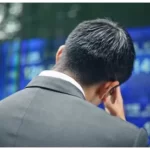German Tipping Point
While the world eagerly watches Mar-a-Lago and the spectacle of US trade tariffs, a development that is at least as important for the global economy is taking place on the other side of the Atlantic. Germany, long the paragon of fiscal discipline and thrift, is undergoing a turnaround that could fundamentally alter Europe’s economic landscape. Translated fundamentally alters Europe’s economic landscape. Not all parts of the German economy are salvageable; Germany is far behind China in the car field.
Germany’s awakening
After almost a decade of economic stagnation — with German GDP still roughly at 2018 levels — the political heavyweights of the CDU and SPD have struck a groundbreaking deal. Friedrich Merz, the incoming German chancellor, and his SPD rivals have decided to bypass the constitutional debt brake on defence spending above 1 per cent of GDP. Even more spectacular is creating an off-balance sheet vehicle of EUR 500 billion for infrastructure investment — a whopping 11 per cent of German GDP.
Financial markets’ reaction was immediate and intense. German 10-year yields made the biggest jump in almost three decades in a day. Even the swap spread turned negative, indicating that the bond market worries about how much sovereign debt it will absorb.
A new European reality
This German U-turn does not come out of the blue. The events of the past week have been a wake-up call for Europe. With the United States abandoning Ukraine and starting to impose import tariffs on its most significant trading partners, European countries are being forced to rethink their position.
Europe can no longer rely on US security guarantees. With looming US import tariffs, Europe can no longer rely on exports as an engine for the eurozone economy. While eurozone exports have risen to more than 50 percent of GDP (20 percent of which go to the US), this is an existential threat.
Impact on the global economy
The German fiscal shift is more than a domestic change of direction — it is a tipping point for the global economy. A combination of increased defence and infrastructure spending could finally pull the German economy out of its long-standing malaise. Even if infrastructure spending is spread over 10 years, it would add about 1 per cent to German GDP annually.
What does this mean for global capital flows? Despite higher energy costs, Germany and the eurozone continue to post sizeable current account surpluses. This means that private savings still exceed domestic investment and government deficits. Less will flow abroad if a larger share of European savings is invested domestically.
This represents a fundamental shift for the US, with a $1 trillion current account deficit. For years, the US has benefited from absorbing excess savings from the eurozone. Reducing this capital flow means higher bond yields or a weaker dollar for the US.
New balance
Recent market behaviour supports this notion. US bond yields fell as the market priced in more Fed rate cuts. And while interest rate differentials between the US and Germany narrowed, EUR/USD rose. This shift towards looser fiscal policy for Germany means higher yields and a stronger euro. After years of stagnation, a rebound in the German economy could provide a much-needed boost for the eurozone. It is a transparent form of reflation, better known as financial repression. It is possible when higher economic growth and inflation are combined with interest rates structurally below that nominal growth rate.
Conclusion
While all eyes are on trade tensions and the whims of the US president, Germany’s awakening from its economic slumber may finally be an equally important shift for the global economy. After years of austerity and restraint, Germany finally seems ready to use its financial power to revitalise Europe.
The world is witnessing a double shift: on the one hand, the US retreat into protectionism; on the other, a European awakening with Germany at the helm. The result could be a fundamental realignment of the global economic balance of power. The euro is likely to strengthen against the dollar. And in market turbulence, the Japanese yen is expected to act as a safe haven. We are at a turning point in the global economy. The players are changing, the game’s rules are changing, and the playing field is being redrawn. It is time to reshuffle our economic cards.




